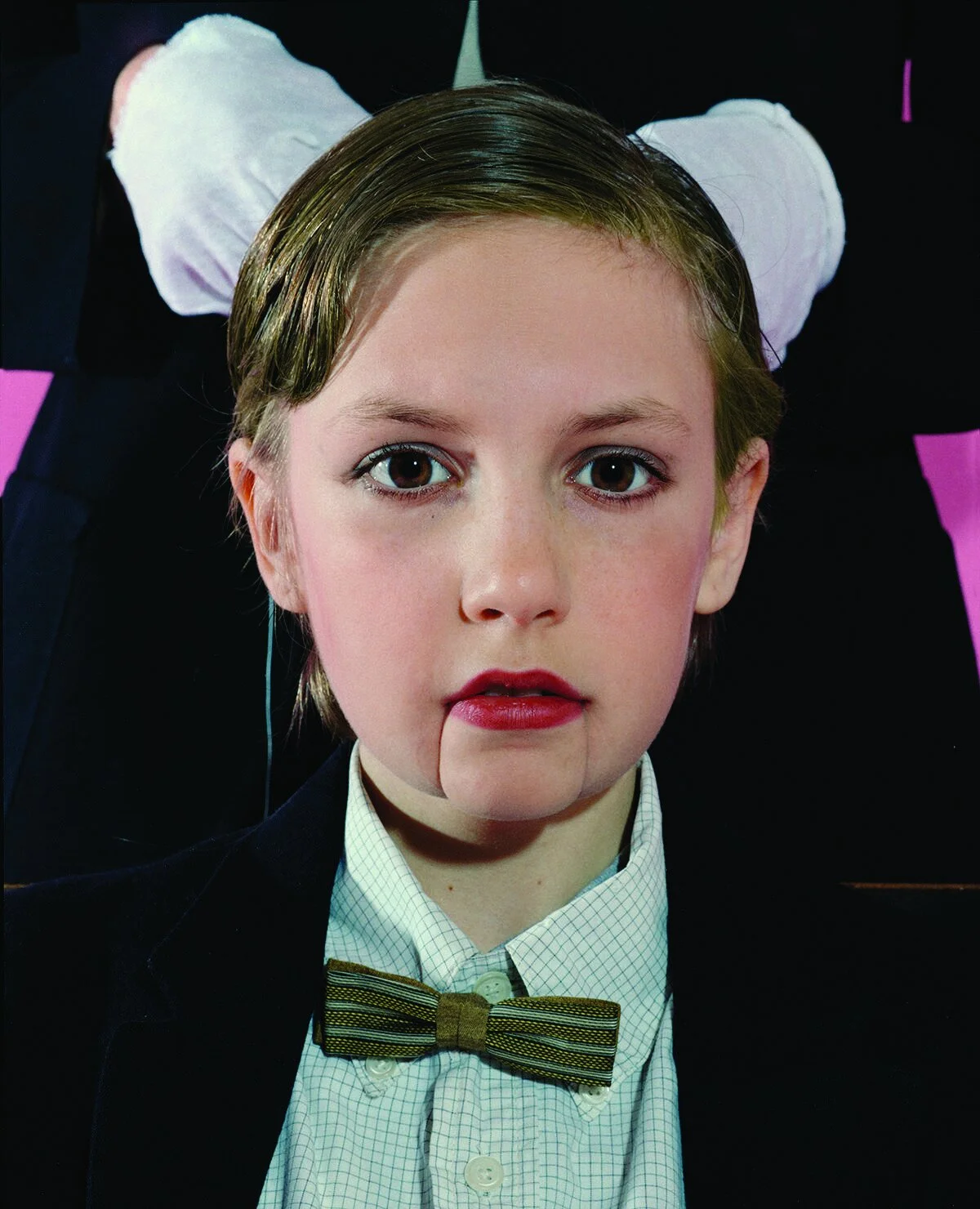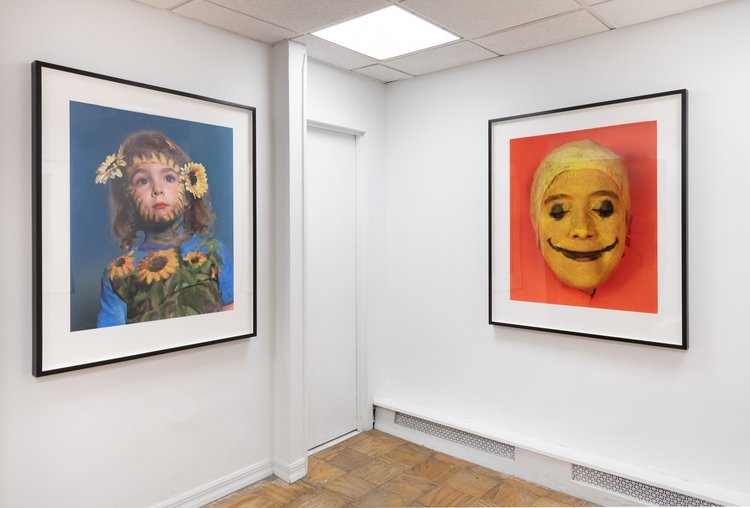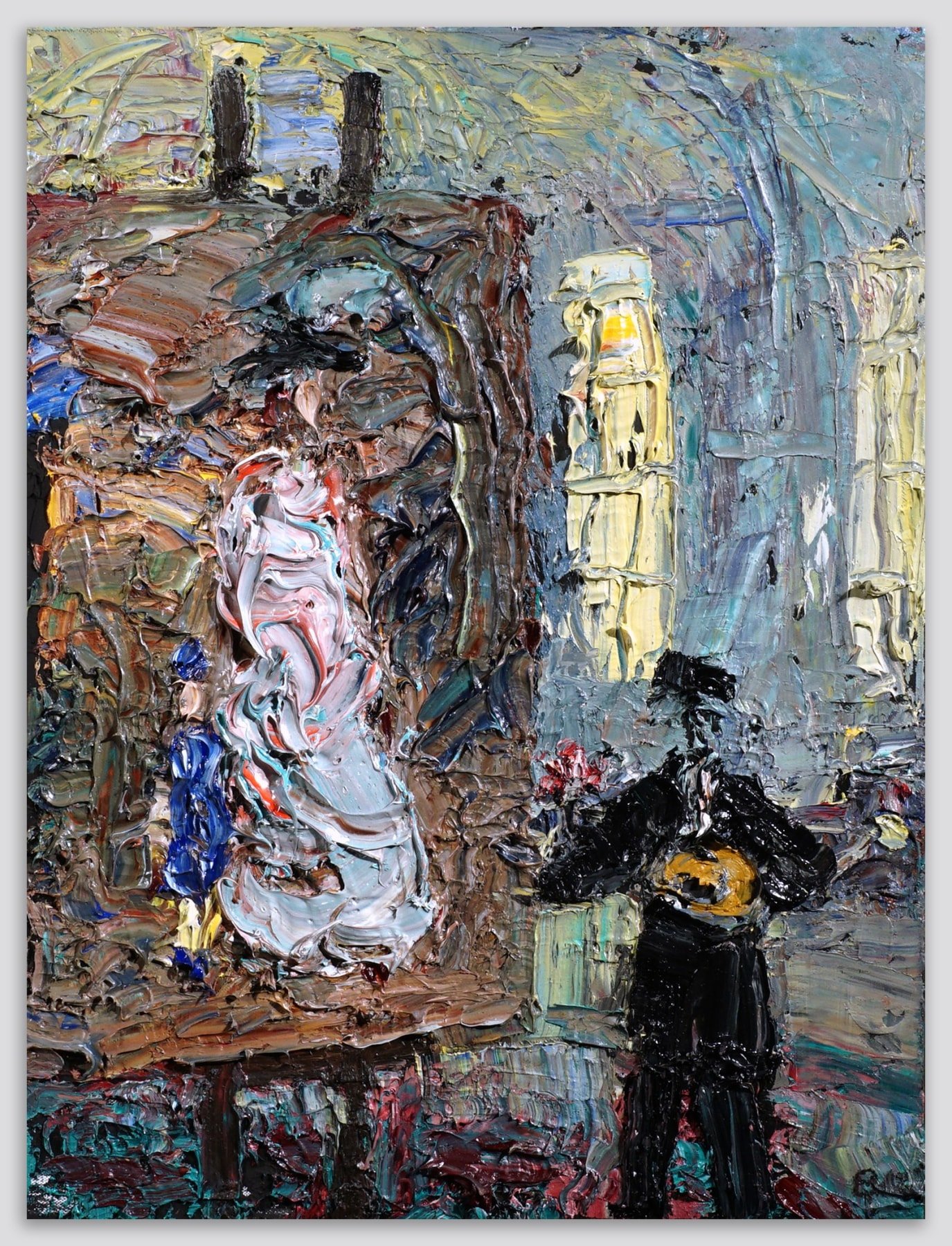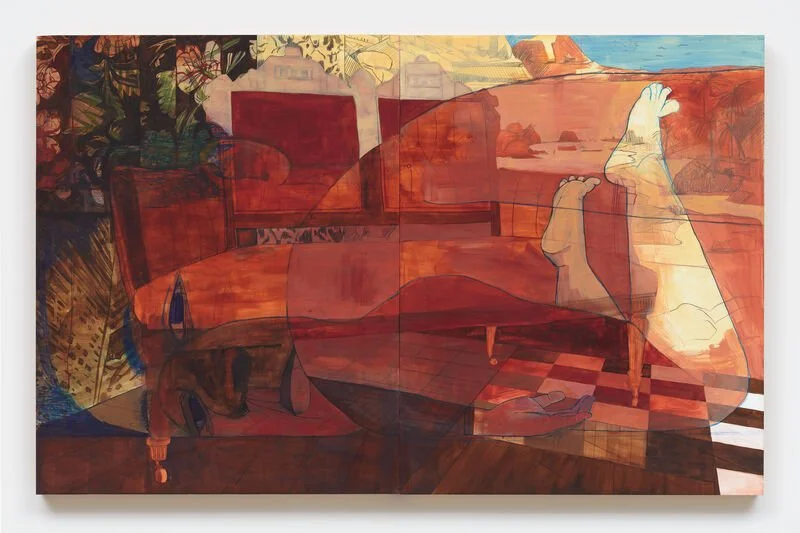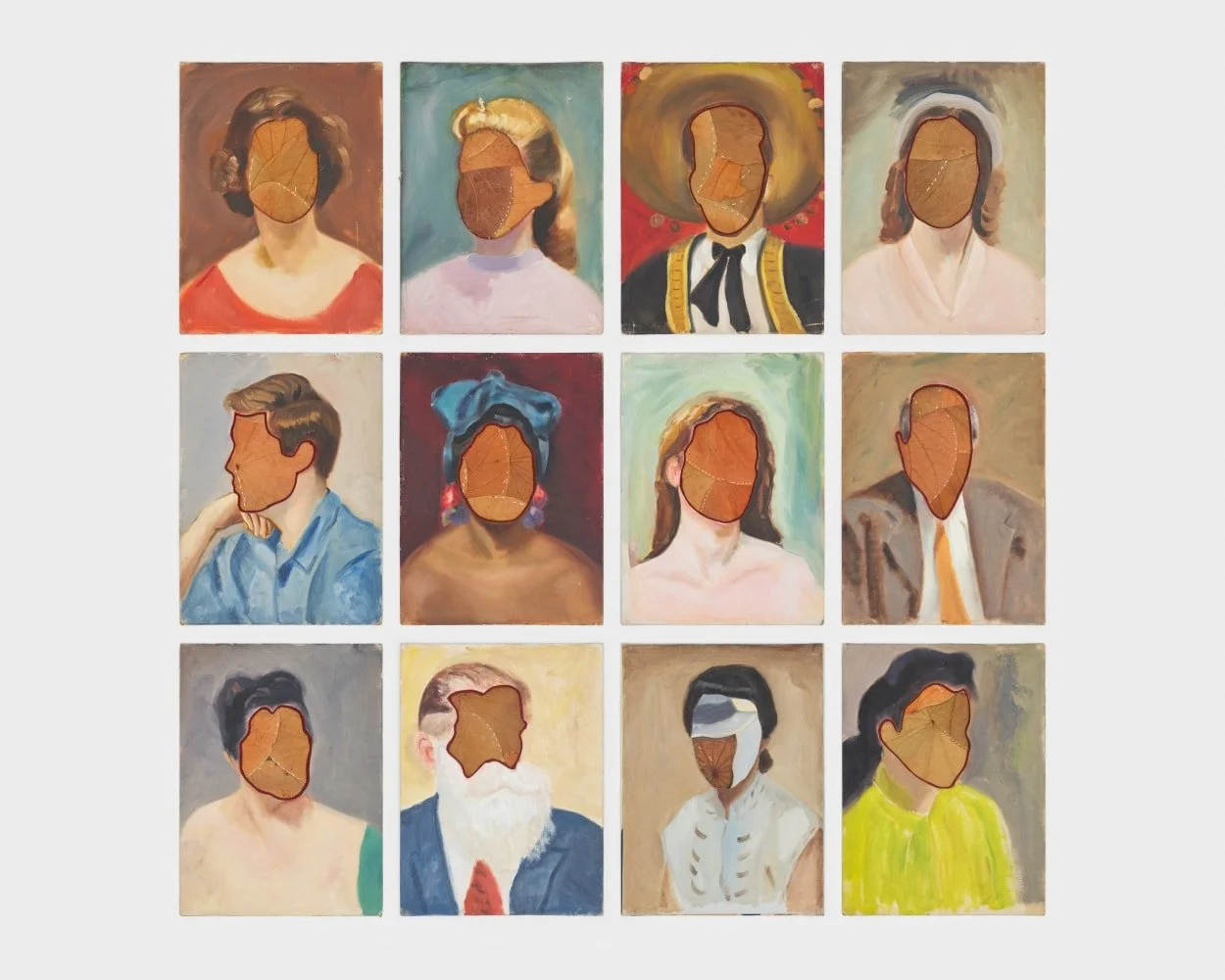Aura Rosenberg
“Who Am I? Where Am I? What Am I?”
New York, 11 East 80th Street
The series began unexpectedly in 1995 when Rosenberg brought a set of face paints to her daughter Carmen's Berlin kindergarten. Carmen's teacher, Marie Schmitz, painted the children's faces, and Rosenberg, in turn, photographed them. That summer, Rosenberg exhibited these works at Kunstlerhaus Bethanien. Back in New York City, she invited artist friends to paint on children's faces. A series of three-way collaborations ensued between Rosenberg, the other artist, and the child. It entailed negotiating an identity comprised of various artistic styles, the camera, and the child's performance of self. In these encounters, Rosenberg's input functioned through these moments of exchange. Ultimately, she would work with over 80 artists on what became an ongoing project.
Aura Rosenberg Who Am I? Where Am I? What Am I? Meredith Rosen Gallery, New York photo: Adam Reich
Rosenberg often pushes the boundary of where the artistic process begins and ends. In this case, she knew that face painting, though popular with families of young children, is considered more of an activity than artistry per se. Rosenberg implicitly asks whether face painting can be taken seriously. Her embrace of this way of making speaks to the condition that artwork never comes from a vacuum and is often supported by a network of care. Who Am I? What Am I? Where Am I? also reminds us that becoming ourselves, exemplified by socialization in kindergarten, has always been an act of communion. Who Am I? What Am I? Where Am I? captures glimpses of becoming, when identity is pliable and discovered through a sense of play.
While Who Am I? What Am I? Where Am I? offered artists a chance to rediscover the kind of play at the core of making art; the series also had long-lasting ramifications for the children who took part. Lena Dunham considers the photo shoot with her mother Laurie Simmons as her "directorial debut". Rosenberg's daughter Carmen's shoot with Mike Kelley was similarly formative. Although excited about the chance to dress up, when she looked in the mirror, she was frightened to see a face she couldn't recognize. She took control of the situation by donning a pair of her mother's dark sunglasses, "Now, the power was in my hands. I could choose to remove that layer of identity whenever I wanted; I learned change can also be a source of strength."

